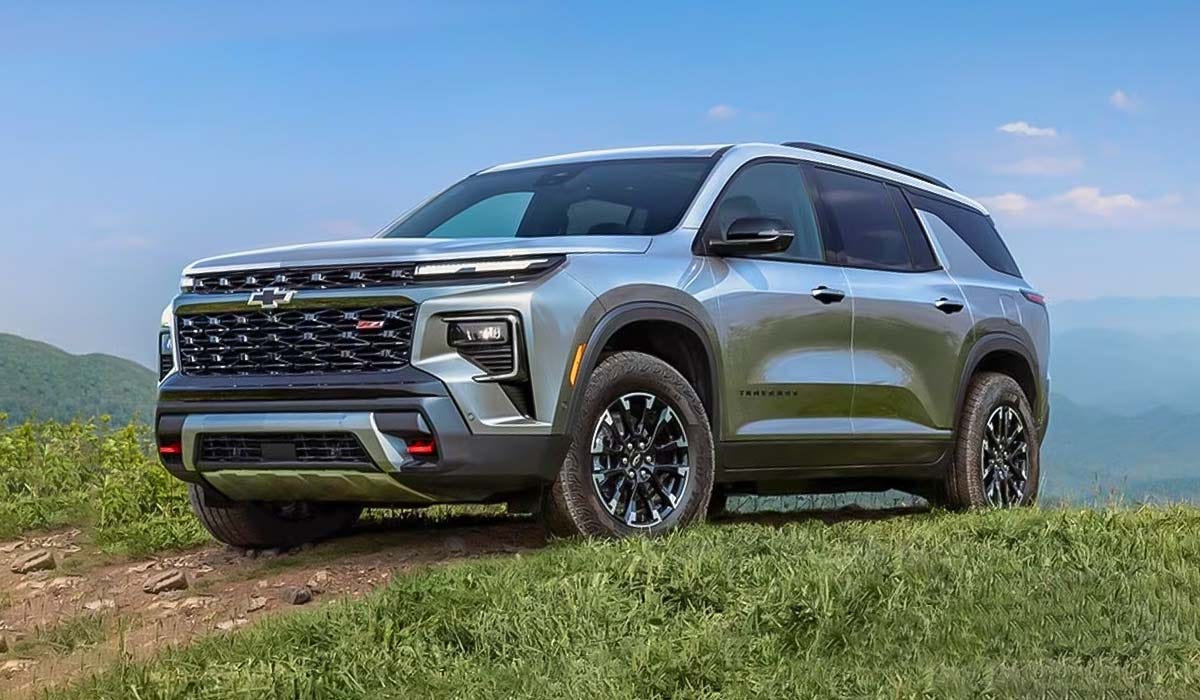\For anyone who frequently loads groceries, luggage, or sports gear into their SUV, a power liftgate can be a game-changer. But not all liftgates are created equal. Some close smoothly with barely a whisper—quiet, consistent, and hands-free.
Not so much. You may find yourself wrestling with a jammed mechanism or hitting the button twice to get the gate to respond. If convenience matters to you, the difference is more than just annoying—it’s a dealbreaker.
Here’s a look at five SUVs with liftgates that operate seamlessly, followed by five models that are known to jam or be inconsistent in their closing operation.
5 SUVs Whose Liftgates Auto-Close Smoothly
When it comes to everyday convenience, the little things in an SUV can make a big difference—and few features get used more often than the power liftgate. Whether you’re juggling grocery bags, loading up for a weekend getaway, or just closing the trunk with a single tap, a liftgate that operates smoothly and reliably adds real value.
But not all liftgates are created equal. Some close with quiet precision, while others stutter, slam, or require multiple attempts. If you want a hassle-free experience every time you access your cargo area, these five SUVs stand out for having some of the smoothest, most refined auto-closing liftgates on the market today.
1. 2025 Toyota Highlander
Toyota nails it with the Highlander’s hands-free liftgate. The sensor responds accurately, the motor is quiet, and the motion is buttery smooth. The system also slows down just before the gate shuts to avoid slamming, a small touch that shows real attention to detail.
Toyota is commemorating 25 years of its popular three-row midsize crossover SUV with the release of the limited-production 2025 Toyota Highlander Limited 25th Edition Hybrid.
This special edition highlights the best features the Highlander has to offer. While the limited-edition hybrid is the headline, the entire 2025 Highlander lineup, including the gas-powered models, receives a series of minor updates for the new model year.
For those who appreciate variety, the Highlander lineup delivers numerous options. Whether you prefer a gas or hybrid powertrain, front-wheel drive (FWD) or all-wheel drive (AWD), a value-focused entry-level trim, or a well-equipped luxury model, the Highlander has a version to fit nearly every preference.
For 2025, the gas-powered Highlander is offered in five trim levels: LE, XLE, XSE, Limited, and Platinum. Each comes equipped with a turbocharged four-cylinder engine paired with an automatic transmission, and both FWD and AWD configurations are available.
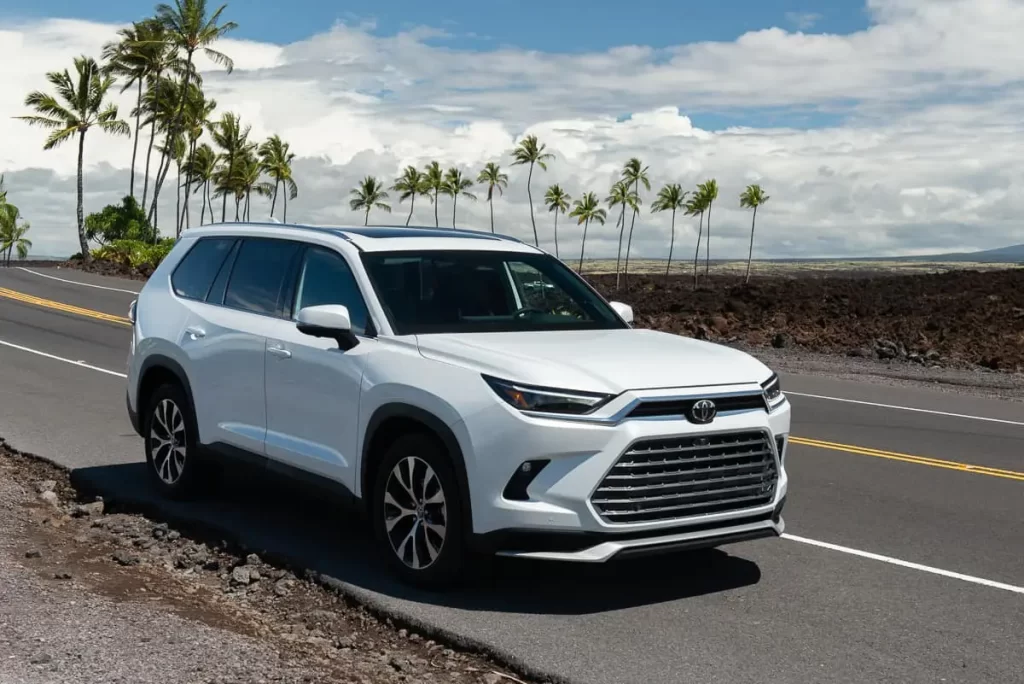
The 2025 Highlander Hybrid lineup mirrors the gas variant in structure, also offering five trims: XLE, XLE Nightshade, Limited, Limited 25th Edition, and Platinum. Hybrid models feature a combination of a four-cylinder gasoline engine, two electric motors, and a continuously variable automatic transmission (CVT), now with AWD as standard across the board.
Key updates for the 2025 Highlander include the debut of the Limited 25th Edition Hybrid, which celebrates a quarter-century of Highlander production.
Other changes include refreshed exterior badging across all models, the addition of two new exterior colors, and a 12.3-inch digital gauge cluster with a Sport mode startup screen for the XSE trim. The base price for the 2025 Highlander starts at $39,520, and the model is scheduled to arrive at U.S. dealerships in November 2024.
The Limited 25th Edition Hybrid leads the visual updates for 2025 and is available in Heavy Metal or Wind Chill Pearl exterior colors. It comes with silver-painted grille trim, bumper and side rocker accents, exclusive rear badging on the liftgate, and unique silver-finished 20-inch wheels.
Beyond this edition, all Hybrid models now feature new “Beyond Zero HEV” badges, and a standardized Toyota emblem is used across the entire lineup. The updated color offerings include Cement, exclusive to the gas-powered XSE, and Heavy Metal, which is available for both gas and hybrid versions of the XLE, Limited, and Platinum trims.
Also Read: Top 10 Most Reliable Used Cars You Can Buy for Under $10,000 in 2025
2. 2025 Honda CR-V
Honda’s CR-V consistently impresses with thoughtful engineering, and the liftgate is no exception. The auto-close mechanism is reliable and gentle, and it rarely requires a second try. Even on inclines, it doesn’t struggle or stall.
When you move up to the 2025 Honda CR-V, you’re met with bold sport-inspired styling and a responsive, well-engineered SUV powertrain. This latest CR-V generation incorporates a wealth of thoughtful and innovative enhancements throughout.
A standout feature is the 9-inch touchscreen, designed with user convenience in mind. It includes a finger rest for stability while navigating menus and Smart Shortcuts that adapt to your usage patterns, helping you quickly access your favorite apps.
If you’re out of cords, the CR-V has you covered—just place your compatible device on the wireless phone charger and it starts powering up. In the 2025 Honda CR-V, cutting-edge technology takes center stage.
Under the hood, a highly efficient turbocharger delivers ample horsepower and torque, making the CR-V both energetic and capable. Available performance highlights include Real-Time AWD, an Intelligent Control System, 19-inch gloss black alloy wheels, and a versatile 4-Mode Drive System, among other advanced features.
Inside the CR-V, a minimalist interior design and wide sightlines create an open, inviting space that feels natural for both drivers and passengers. Comfort and convenience are at the forefront with available features such as a one-touch power moonroof, a leather-wrapped steering wheel, dual-zone automatic climate control, heated front seats, and more.
The 2025 CR-V’s rugged appearance is defined by its long wheelbase and wide stance, delivering a confident look and improved stability. Available exterior features include gloss black roof rails, dual chrome exhaust finishers, heated power side mirrors, and a power tailgate with programmable height.
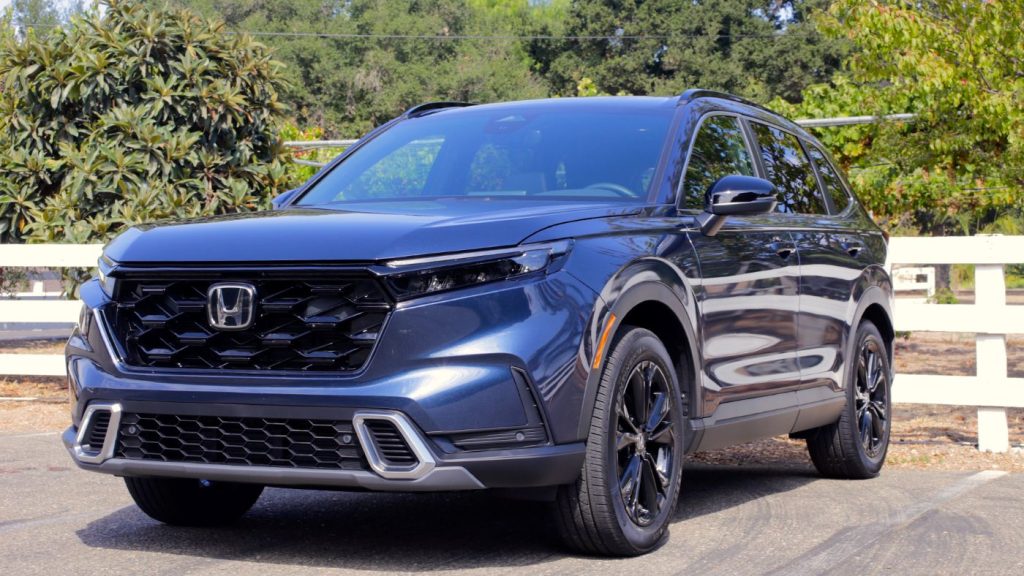
The 2025 Honda CR-V is available in a range of trims designed to meet different driving needs and preferences. These include the LX, EX, and EX-L, each offering its own balance of features and affordability.
In terms of performance, the 2025 CR-V remains a standout in the compact SUV segment, continuing Honda’s legacy of dependability, comfort, and technology.
With its updated styling, improved safety systems, and available hybrid powertrains, it’s well-suited for both families and daily commuters. Whether you’re navigating city streets or taking a weekend road trip, the CR-V provides a smooth and confident ride.
The 2025 CR-V offers two well-balanced engine choices. The first is a 1.5-liter turbocharged four-cylinder engine that generates 190 horsepower. The second option is a 2.0-liter hybrid powertrain that produces a combined 204 horsepower. Both are engineered for smooth, fuel-efficient performance and a composed driving experience, letting drivers choose the setup that best fits their needs.
Trim options for the 2025 CR-V include the LX, EX, EX-L, Sport Hybrid, Sport-L Hybrid, and Sport Touring Hybrid. Each trim level brings its own selection of amenities, from leather seating and larger infotainment displays to premium sound systems and enhanced driver-assistance technologies.
New features for the 2025 model year include upgraded interior materials, enhanced Honda Sensing safety technology, a wireless phone charger, the 9-inch touchscreen display, wireless Apple CarPlay and Android Auto, and a customizable digital instrument cluster—all designed to elevate comfort and connectivity on the road.
Fuel efficiency continues to be one of the CR-V’s strong suits. The 1.5L turbocharged FWD models are estimated to deliver up to 28 MPG in the city and 34 MPG on the highway. For even better efficiency, hybrid models boast up to 43 MPG city and 36 MPG highway, making the CR-V an economical choice for cost-conscious drivers.
All-wheel drive is also available on most trims of the 2025 CR-V. The Real Time AWD with Intelligent Control System™ helps optimize traction and stability, enhancing performance in various weather conditions and light off-road environments, so drivers can feel confident in changing conditions.
Cargo space in the 2025 CR-V is generous, with 39.3 cubic feet available behind the second row. Folding the rear seats flat expands the cargo area to 76.5 cubic feet, providing plenty of room for everything from groceries to camping gear.
3. 2025 Kia Telluride
The Telluride’s power liftgate closes with luxury-level fluidity. It’s equipped with a smart key-activated feature and customizable height settings, ensuring the gate never slams or hesitates. Kia also tuned the motor for quieter operation, adding to its premium feel.
Every 2025 Kia Telluride continues to be powered by a 3.8-liter V-6 engine that produces 291 horsepower and 262 lb-ft of torque. This engine is paired with an eight-speed automatic transmission. Front-wheel drive (FWD) comes standard across the lineup, while all-wheel drive (AWD) is either available as an option or included, depending on the specific trim level.
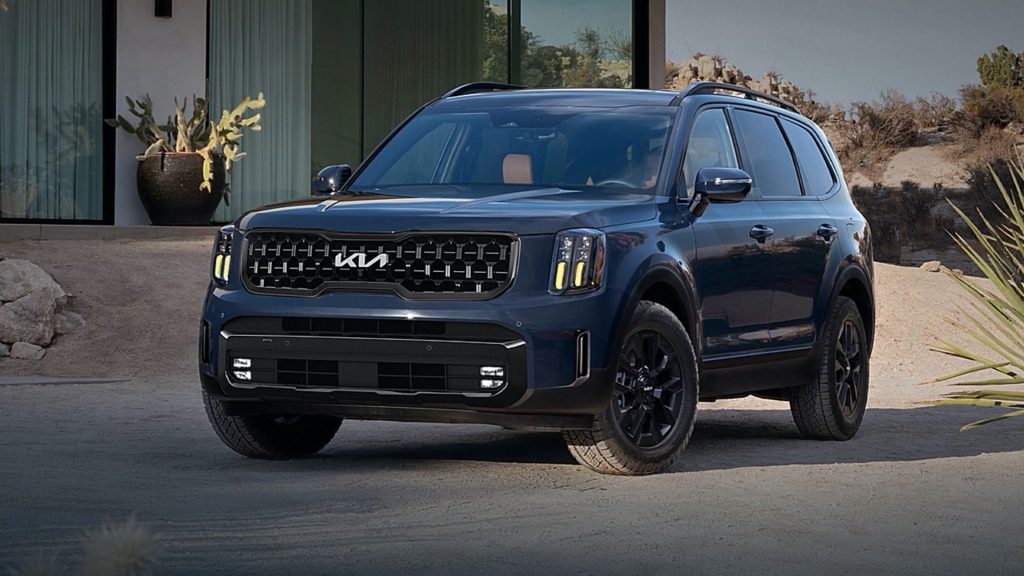
In MotorTrend’s performance testing, the Kia Telluride X-Line posted a 0–60 mph time of 6.9 seconds. Meanwhile, the more rugged, off-road-oriented X-Pro variant completed the same sprint in 7.0 seconds. According to the EPA, fuel economy ratings for the Telluride are 20 mpg in the city and 26 mpg on the highway with FWD, and 18 mpg city and 23 mpg highway with AWD.
Many are hoping that Kia will soon add a hybrid version of the Telluride to the lineup. Such a move would align with the existing hybrid offerings in the Sorento and the newly introduced hybrid Carnival, and would likely enhance the Telluride’s overall fuel efficiency.
Also Read: Top 10 Cars Restored by Popular American YouTubers
4. 2025 Lexus RX
As expected from a luxury SUV, the RX features an exceptionally refined liftgate. The movement is perfectly balanced, and the soft-close feature works flawlessly. The gesture control is responsive without being too sensitive, and the system has a solid reliability record.
The 2025 Lexus RX remains the brand’s best-selling midsize crossover, offering a diverse range of powertrains including gas-only, hybrid, plug-in hybrid, and performance hybrid options. For the new model year, Lexus introduces the F Sport Design trim, which is available exclusively on the RX 350 and RX 350h.
This trim brings a sportier aesthetic with 21-inch metallic black alloy wheels, an F Sport front grille, and black open-pore wood trim in the interior.
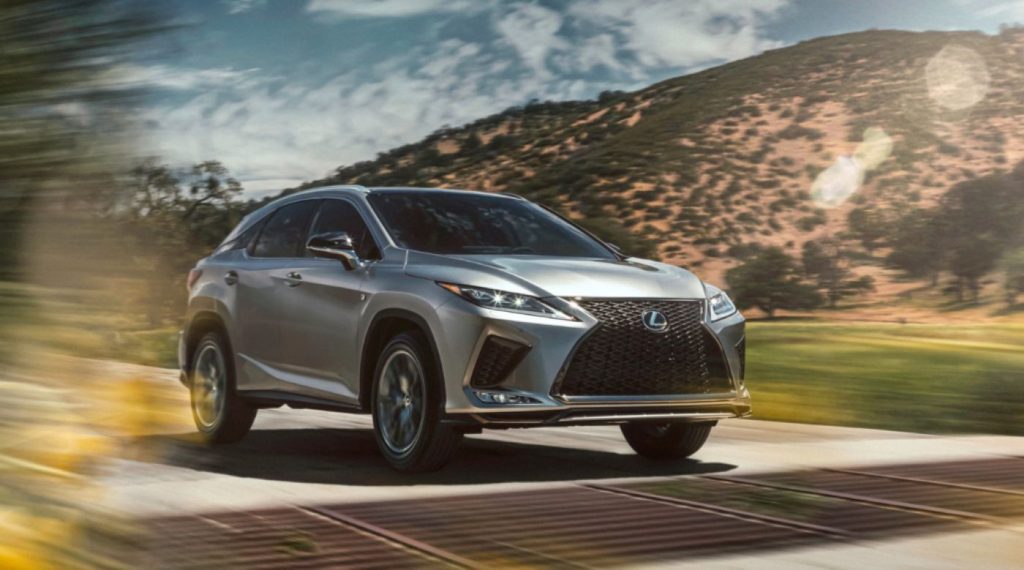
Adding further exclusivity to the lineup is the RX 500h F Sport Black Line Special Edition, which is limited to just 500 units. This model features unique Incognito exterior paint, gray contrast stitching inside, and 21-inch split five-spoke wheels that enhance its upscale and aggressive look.
The 2025 RX lineup includes four distinct powertrain variants: gas, hybrid, plug-in hybrid, and a performance hybrid. Lexus identifies its hybrid models with a small “h,” while the plug-in hybrid is marked with an “h+” badge. To accommodate different driving needs and preferences, the RX continues to offer both front-wheel drive (FWD) and all-wheel drive (AWD) across the lineup.
5. 2025 Hyundai Palisade
Hyundai’s upscale Palisade combines utility and polish. Its liftgate has smart proximity detection, meaning it starts to open (and close) as you approach with the key. It shuts evenly and gently every time, and the anti-pinch sensors work exactly as intended.
The 2025 Hyundai Palisade remains one of the most well-rounded and appealing mid-size SUVs on the market, continuing its strong reputation since launch. Under the hood, it’s powered by a 3.8-liter V-6 engine paired with an eight-speed automatic transmission.
While front-wheel drive is standard, all-wheel drive is also available for those who need it. Inside, the Palisade offers a spacious, thoughtfully designed cabin that can accommodate up to eight passengers, delivering a smooth and comfortable ride throughout.
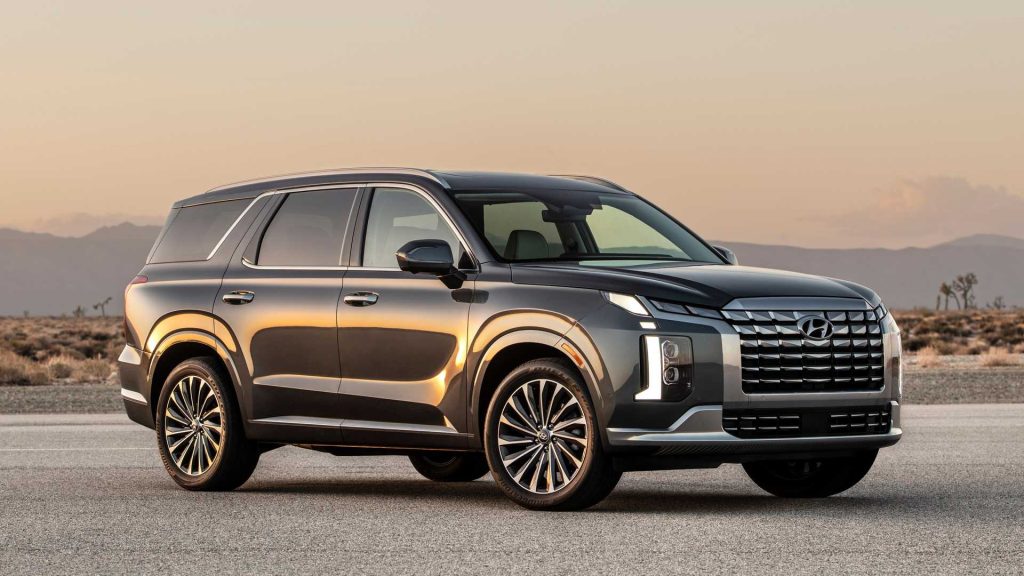
Although it doesn’t aim to be overtly sporty or particularly capable off-road, the Palisade excels at combining a generous array of standard tech and safety features with a wealth of connectivity and charging options to ensure a comfortable and engaging experience for all occupants.
For those seeking a more upscale experience, options such as quilted leather upholstery, second-row captain’s chairs, and premium audio are available.
While the Mazda CX-90 may provide sharper handling and the Jeep Grand Cherokee boasts greater towing capacity, the Palisade strikes a perfect balance for suburban families, offering impressive value and everyday usability.
5 SUVs Whose Liftgates Tend to Jam or Malfunction
When it comes to modern SUV convenience, power liftgates are supposed to make life easier—but in some models, they end up doing the opposite. A liftgate that jams, hesitates, or refuses to close properly can turn a quick grocery run or airport pickup into a frustrating ordeal.
Whether it’s due to weak motors, poor sensor calibration, or software glitches, some SUVs just can’t get the job done reliably. If you’re in the market for a vehicle and want to avoid annoying liftgate issues, these five SUVs have gained a reputation for inconsistent or malfunctioning rear hatch performance.
1. 2025 Ford Explorer
While the Explorer offers a hands-free liftgate, users frequently report hesitation and occasional failure to latch properly. On colder days, it can get sluggish, and the foot-activated sensor doesn’t always register on the first try.
The three-row midsize Ford Explorer carries on a legacy that dates back to the early days of the SUV era, with the original Explorer playing a pivotal role in launching America’s enduring fascination with sport-utility vehicles.
Unlike many of its rivals, the current Explorer is built on a rear-wheel-drive platform, a design choice that enhances its handling and gives it a more athletic feel than most other midsize SUVs. For the 2025 model year, Ford directed its efforts where they were most needed—significantly upgrading the Explorer’s interior.
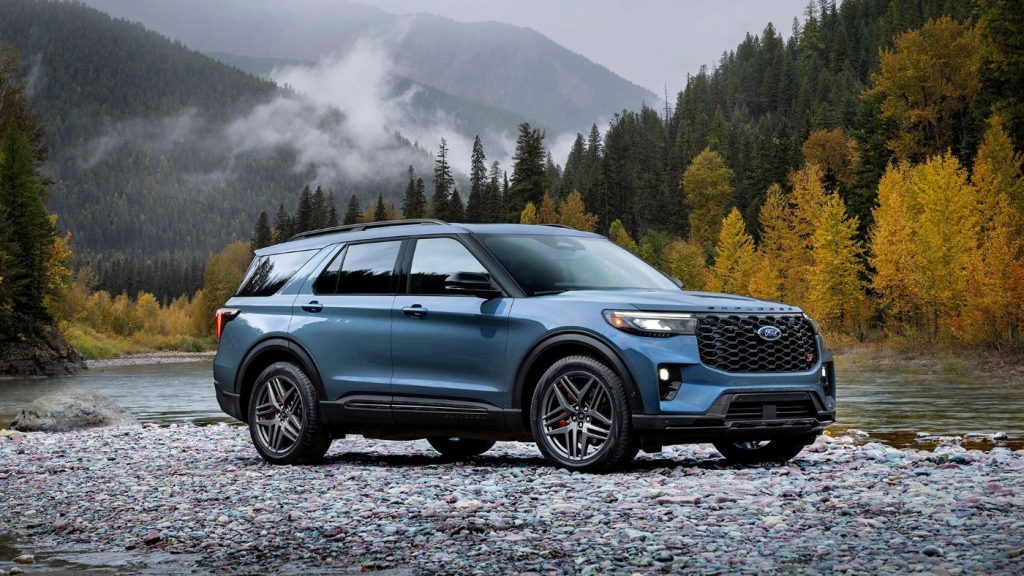
This long-overdue cabin refresh tackles two of the Explorer’s previous weak points: its functionality and visual appeal. Among the most notable updates is a newly standard 12.3-inch digital instrument cluster, joined by a new 13.2-inch touchscreen that debuts the Ford Digital Experience infotainment system.
This Android-based system comes with wireless Android Auto and Apple CarPlay and features Google Maps along with Google Assistant for voice controls.
Ford’s BlueCruise hands-free highway driving system is also now available, although it comes at a price—$75 per month, $800 per year, or $2,100 for a three-year subscription, which may be disappointing for some buyers. Aesthetically, Ford has introduced new standard interior color schemes designed to better distinguish the various trim levels.
2. 2025 Jeep Grand Cherokee
The Grand Cherokee suffers from inconsistent liftgate behavior. Some owners have experienced sudden halts midway through closure or repeated beeping with no action. The motor lacks finesse and can feel abrupt when it finally does close.
The Jeep Grand Cherokee was instrumental in shaping the modern SUV landscape during the 1990s and remains a prominent contender in today’s highly competitive market. The current-generation model debuted for the 2022 model year, and although a refresh has been anticipated, it now appears that any significant updates will be delayed until 2026.
Jeep currently offers the Grand Cherokee in three configurations: a standard wheelbase five-seat version, the three-row long-wheelbase Grand Cherokee L, and the 4xe plug-in hybrid variant—both the L and 4xe are covered in separate reviews. Other midsize SUVs that offer off-road capability include the Subaru Outback and the Toyota 4Runner.
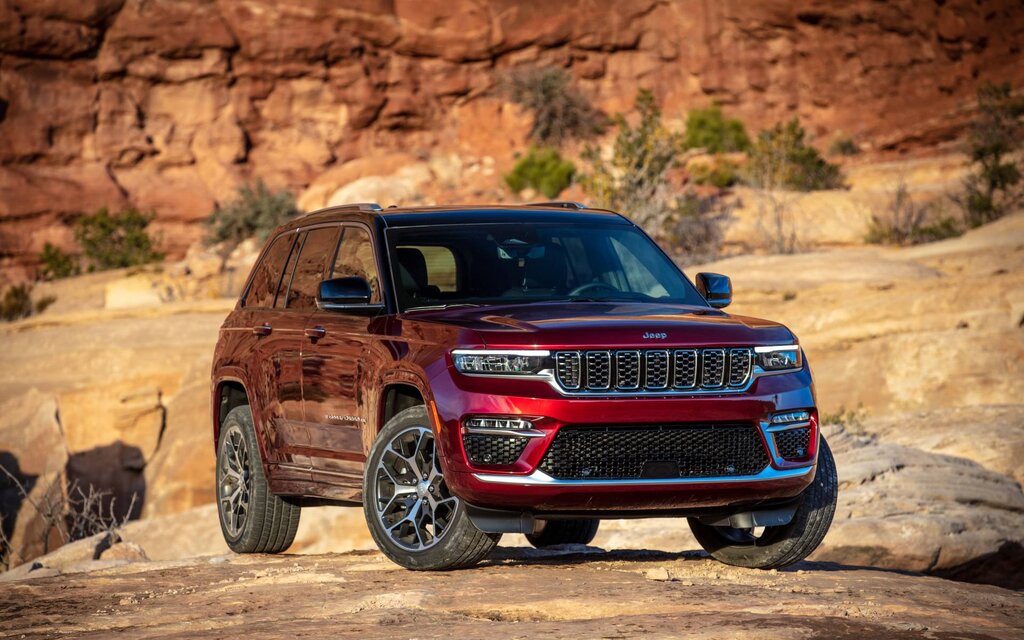
For 2025, Jeep was expected to make notable changes to the Grand Cherokee, but instead, the updates are limited to its pricing. Across the entire trim range, MSRP has been reduced, with base models seeing a $1,000 cut and the highest trims dropping by $4,000. Full pricing details can be found in our dedicated report.
Overall, the Jeep Grand Cherokee delivers impressive off-road prowess, a refined on-road ride, and a high-end interior. Since its last major redesign in 2022, however, the midsize SUV is beginning to show its age.
Its V-6 engine is due for improvements in both power and efficiency. Additionally, we’ve noted that the braking system could benefit from greater sharpness and consistency, and the Grand Cherokee still falls short in standard driver-assistance technology compared to top rivals in its segment.
3. 2025 Chevrolet Traverse
Despite its size and family-friendly design, the Traverse’s power liftgate has a history of getting stuck or needing a second attempt to fully shut. The system sometimes closes unevenly, especially when the vehicle is parked on a slope.
The Traverse falls short in delivering a truly engaging driving experience, primarily due to its sluggish steering, which diminishes its appeal for those who value responsiveness behind the wheel. That said, one of its standout strengths is its exceptionally smooth ride—among the best in its segment—making it a strong contender for families prioritizing comfort in daily transportation.
Every 2025 Traverse model is powered by a turbocharged 2.5-liter four-cylinder engine that produces 328 horsepower and 326 pound-feet of torque. It comes standard with an eight-speed automatic transmission and front-wheel drive, while all-wheel drive is available as an option.
Although the engine can sound a bit coarse when accelerating hard, it provides ample power to confidently handle urban traffic and merge onto highways without hesitation.
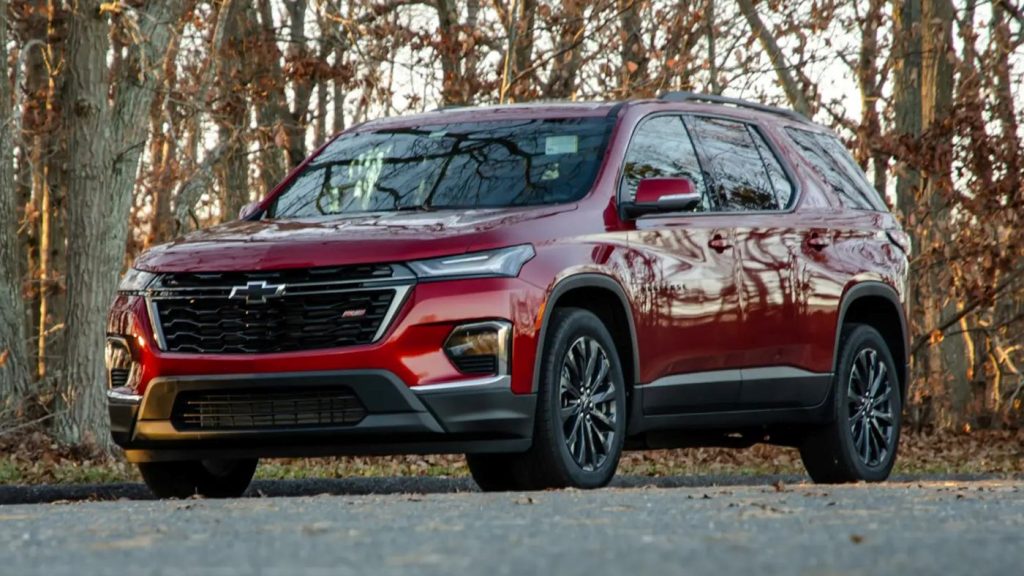
When it comes to fuel efficiency, the 2025 Traverse delivers average results for a midsize SUV. EPA estimates put front-wheel-drive models at 20 mpg in the city and 27 mpg on the highway. All-wheel-drive variants drop slightly to 19 mpg city and 24 mpg highway.
Inside, the Traverse’s interior materials don’t quite measure up to the best in the class, as some finishes feel a notch below top-tier rivals. Still, the overall design is attractive, and key touchpoints feature soft-touch materials. The cabin’s spaciousness is one of its biggest assets, with seating for up to eight and enough room in all three rows to accommodate adult passengers comfortably.
Cargo capacity is another area where the Traverse excels. It offers 22.9 cubic feet of space behind the third row, 56.6 cubic feet behind the second row, and a class-leading 97.6 cubic feet with both rear rows folded down. Adding to its practicality, a hands-free power liftgate comes standard.
4. 2025 Volkswagen Atlas
Volkswagen’s Atlas has faced complaints about its power liftgate not responding promptly or stopping before fully closing. In some cases, the motor stutters as if struggling to complete the cycle, and the foot-swipe sensor is hit-or-miss.
Think of the 2025 Volkswagen Atlas as a modern-day station wagon reimagined for today’s families. This three-row SUV offers seating for up to seven passengers, a maximum towing capacity of 5,000 pounds, and a clean, albeit conservative, exterior design. Second-row legroom is notably generous, and cargo space is equally impressive when the second and third rows are folded flat.
While the cabin is spacious and highly functional, it falls short in delivering any real visual excitement or upscale flair. Powering the Atlas is a single engine option: a turbocharged 2.0-liter four-cylinder that makes 269 horsepower and is mated to an eight-speed automatic transmission.
Acceleration is adequate rather than thrilling. Front-wheel drive is standard on the SE and SE with Technology trims, while all-wheel drive is optional. The Peak Edition SE and all trims above it come with all-wheel drive as standard.
As a people mover, the Atlas is highly competent, but competitors like the Kia Telluride, Jeep Grand Cherokee L, and Mazda CX-90 offer more in terms of design and refinement. If you’re drawn to the Atlas but want a sportier aesthetic, consider the Atlas Cross Sport, which sacrifices the third row for a more stylish profile.
After undergoing a significant refresh in 2024, the 2025 Atlas receives only minor updates. Wireless device charging is now standard across the lineup, and the SEL Premium R-Line gains additional luxury features such as perforated headrest upholstery, four-way adjustable lumbar support, and a front-seat massaging function.
New color options include Mountain Lake Blue, Avocado Green, and Pure Grey—the latter two previously exclusive to the Peak Edition. Additionally, most 2025 Atlas models with an active VW Car-Net subscription now offer a voice assistant powered by ChatGPT.
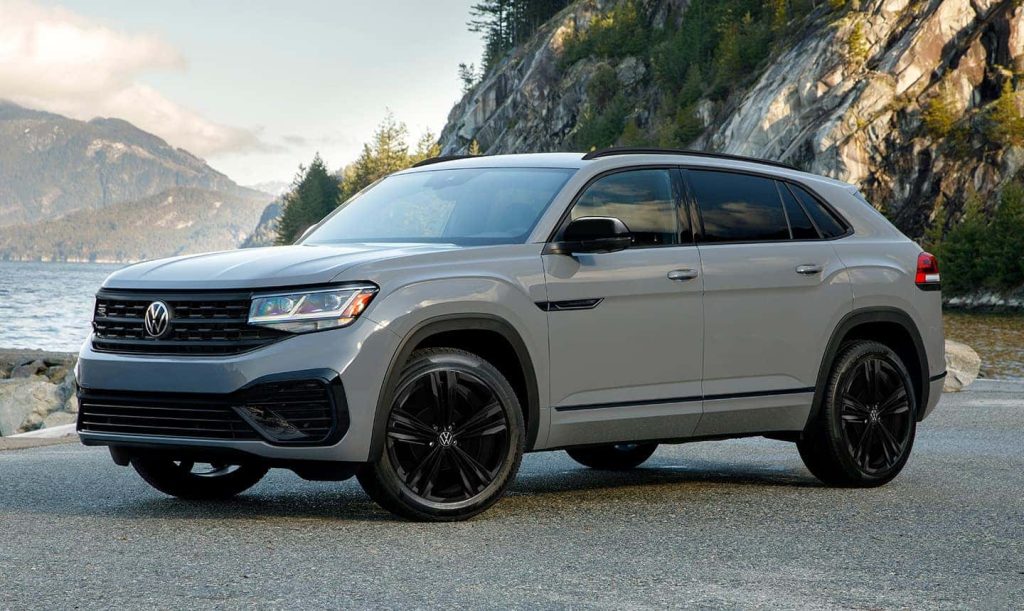
The 2025 Atlas starts at $39,625 and tops out at $54,630 depending on trim and options. We recommend the SE with Technology trim and adding VW’s 4Motion all-wheel-drive system.
This version upgrades from 18- to 20-inch wheels, includes a trailer hitch package, remote start, and USB charging ports for the third row. For maximum second-row comfort, opt for the available captain’s chairs.
Under the hood, all Atlas trims are equipped with a 269-hp turbocharged 2.0-liter four-cylinder engine delivering 273 pound-feet of torque. This powertrain is an improvement over the previous 276-hp V-6 used through 2023, with better throttle response and a retuned transmission that gives the vehicle a livelier feel.
The Atlas is obedient in everyday driving but becomes less composed when driven aggressively around corners. On highways, it feels stable and smooth, and it remains reasonably agile in city driving, though rough potholes can disturb its otherwise comfortable ride. That said, it’s not as engaging as rivals like the Mazda CX-90.
At our test track, the 2024 Atlas reached 60 mph in 7.3 seconds, outpacing the older V-6 model we tested in 2018. The quarter-mile took 15.6 seconds at a trap speed of 92 mph, and top speed is electronically limited to 117 mph.
In terms of towing, nearly all Atlas models are rated to pull up to 5,000 pounds with a trailer equipped with brakes—on par with the Toyota 4Runner and Subaru Ascent. The SE with Technology and higher trims come with a standard trailer hitch. The base SE requires an aftermarket hitch and has a 2,000-pound towing limit.
Fuel economy for the Atlas is average for its class. The EPA estimates 20 mpg city and 27 mpg highway for front-wheel-drive versions.
Adding all-wheel drive drops those numbers slightly to 19 mpg city and 26 mpg highway, while the Peak Edition trims are rated at 18 mpg city and 24 mpg highway. In real-world testing, our AWD 2024 Atlas delivered 25 mpg on our 75-mph highway loop.
Inside, the Atlas delivers plenty of family-friendly features, from its straightforward control layout to its abundance of cupholders. The third row is spacious enough to comfortably seat adults, which isn’t always the case in this segment. While the interior design leans more utilitarian than upscale, cabin materials improved with the 2024 refresh.
5. 2025 Nissan Pathfinder
Nissan’s Pathfinder comes equipped with a power liftgate, but it doesn’t feel refined. It can jerk closed suddenly or pause without reason mid-motion. Several users note the gate often requires manual help to fully latch, especially in colder climates.
A smooth-closing liftgate might seem like a minor feature, but when it doesn’t work correctly, it becomes a daily frustration. SUVs like the Toyota Highlander and Lexus RX prove that well-designed liftgates can make a big difference in overall convenience and vehicle satisfaction.
Although the Nissan Pathfinder has improved significantly, it still only manages to land in the middle of the pack among its midsize SUV rivals.
In our testing, the Pathfinder delivered strong performance numbers. Its V-6 engine produces solid power at higher revs, but it feels underwhelming at lower RPMs, where most daily driving occurs.
A modern turbocharged or hybrid powertrain would greatly enhance its drivability and improve fuel efficiency. The vehicle’s name seems somewhat ironic considering its difficulties with even mild off-road terrain. That said, the Rock Creek trim—equipped with a lifted suspension and all-terrain tires—should offer modest improvements in off-road capability.
The 2025 Pathfinder continues to use the same engine as in previous years: a 3.5-liter V-6 that produces 284 horsepower and 259 lb-ft of torque in standard models.
The Rock Creek variant can generate up to 295 horsepower and 270 lb-ft of torque when fueled with premium gasoline. All models pair this engine with a nine-speed automatic transmission and are available in either front-wheel or all-wheel drive.
Fuel economy for front-wheel-drive models is rated at 20 mpg city and 27 mpg highway. All-wheel-drive versions range from 20–21 mpg in the city to 23–27 mpg on the highway, depending on the configuration.
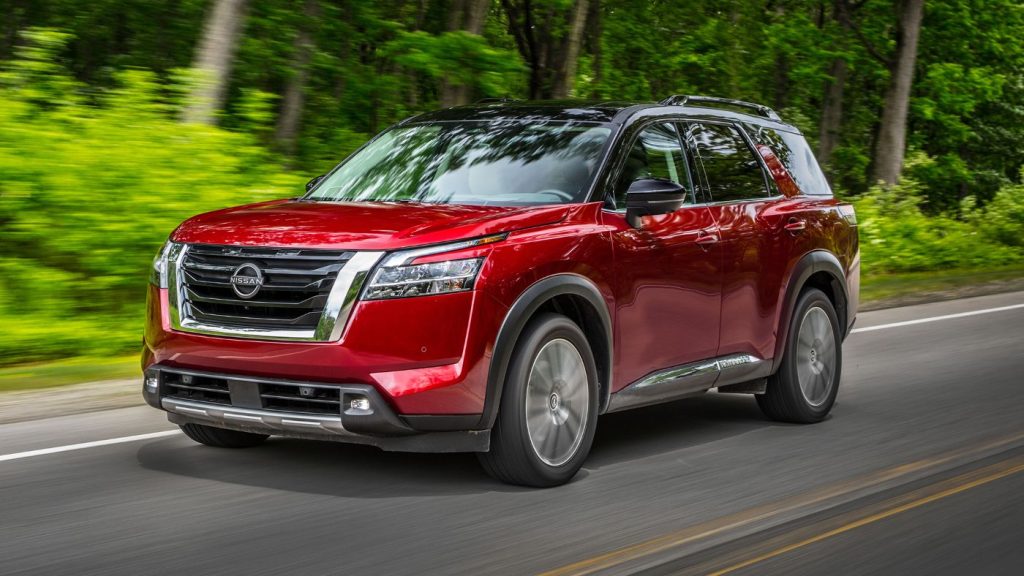
A new engine could be a major enhancement for the Pathfinder, and a change might be coming for the 2026 model year. The closely related Infiniti QX60, which previously shared the same V-6 powerplant, switched to a turbocharged 2.0-liter inline-four for 2025.
That engine is smaller but delivers torque at lower RPMs, improving everyday drivability. While not perfect, it’s a step up for the QX60 and would likely benefit the Pathfinder in a similar way.
In its most recent round of testing, the 2024 Pathfinder earned the IIHS Top Safety Pick+ rating, the highest designation awarded. The 2025 model also received a five-star overall safety score from the NHTSA.
The Pathfinder comes well-equipped with a suite of standard driver-assist and active safety technologies. These include front and rear automatic emergency braking, blind-spot monitoring, rear cross-traffic alert, and lane keep assist. Higher trims add adaptive cruise control and Nissan’s ProPilot Assist, a semi-autonomous driving system that adds further convenience and safety.
Meanwhile, others like the Ford Explorer and Chevy Traverse still have some kinks to iron out. As always, when shopping for an SUV, try the liftgate yourself—what seems like a small detail on paper can have a major impact in real-world use.

